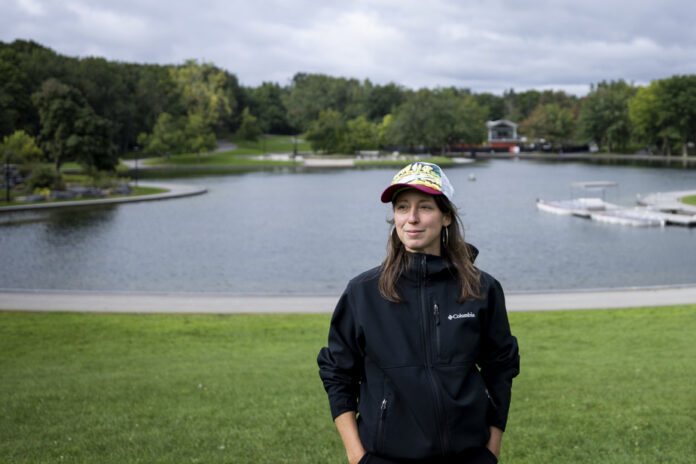For a year, Pattie O’Green hiked Mount Royal from one peak to the other. In the rain, on cross-country skis, at dusk and in the early morning. This is how, against all expectations, The Prophecies of the Mountain was born, a personal essay of a gentleness as invigorating as a walk in the forest, where she talks about everything that makes the mountain and which echoes his own life.
Feverish, she meets us in the very places that served as her inspiration; this urban mountain which was her “backyard” in all those moments when she needed to walk, whether to evacuate an overflow of emotions or to seek some form of relief. “The mountain is always different even if I go to the same places. There is something, in this kind of repetition which is never one, which comforts me,” she confides.
From the indignant thirty-year-old who signed Celestial Manifesto and Putting the Axe, a hard-hitting book about the incest of which she was a victim, today there remains a calm, more serene artist, who confides that she has finally found her place in writing, after a tortuous journey which saw her study art history, complete a doctorate in semiology, then roll up her sleeves and undertake professional training in horticulture before working at the City and finally resigning …the day she obtained her tenure there.
“Every time I wanted to secure myself [in a job], I didn’t feel happy. I was so passionate about horticulture that I continued and became an arborist; but at some point I tied it all together in my writing and that’s where it really comes together holistically. »
For four seasons, Pattie O’Green – a pseudonym adopted when she began writing – explored the multiple facets of what she calls “everyone’s mountain”. A year of taking notes and painting watercolors to explore new ways of seeing these places she had known since adolescence.
“Before, it was just a gathering place for me, to party, meet people, smoke joints,” she says with a laugh.
But over the years, his relationship with the mountain has changed to the point of becoming a place of calm – and healing, even. She came to explore its northern slope, discovering “an extraordinary eclecticism” which, according to her, makes it a unique place.
“Central Park, for example, was all done by Olmsted [the American landscape architect who designed Mount Royal Park]. But here, we have lots of landscaping. There is Mount Royal Park which was designed in a certain way and which has been transformed over the years; if we go to the Mount Royal cemetery, it’s different; if you go towards the Oratory or Summit Wood, it’s another world,” she illustrates.
And in each of these places, nature is not preserved and treated in the same way, notes the horticulturist-arboriculturist. “I find it so important to have different possibilities for relationships with nature, because there are some who will feel comfortable just on very large paths like in the cemetery, for example. We don’t all have the same way of connecting with nature. »
“The mountain has many faces; the way it changes, the way it is arranged, but also appropriate, she emphasizes. For some, the Beaver Lake area is a children’s park. For others, it’s chilling in a gang then drinking beer, or having a big family picnic…”
But for Pattie O’Green, the mountain has become an allegory of life, a territory that becomes an extension of our own body. “And it is from there,” she writes in her book, “that the necessity and the energy to take care of it are born. »















